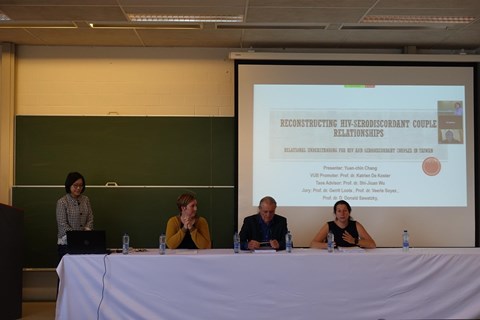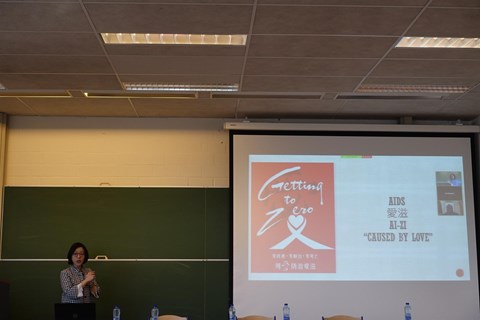Yuan-Chin Chang Dissertation
DISSERTATION TITLE:
Reconstructing HIV – Serodiscordant Couples Relationships
Relational Understanding for HIV and Serodiscordant Couples in Taiwan
2018
VUB
Serodiscordant
couples, in which one partner has human immunodeficiency virus (HIV)
and the other does not, are hidden in Taiwanese society. Because of HIV
stigmatization, serodiscordant relationships are an unrecognized,
unblessed, and unspeakable type of relationship. The majority of
Taiwanese research concerning HIV-serodiscordant couples has focused on
HIV-serostatus disclosure strategies, disease prevention, reproductive
issues, and challenges for romantic couples caused by HIV. Studies have
rarely emphasized the strengths, resilience, and possibilities of
couples in these relationships.
From the perspective of social
constructionism, illness experiences are socially constructed, and
people co-create the meanings of illnesses in relationships. In this
research, I endeavored to understand how serodiscordant couples
interpret the meaning of HIV in their relationships. This research was
conducted as a qualitative investigation using social constructionism
concepts and collaborative narrative inquiry methods.
Diverging
from previous research that observed that noninfected partners were
usually the caregivers in these relationships, in this study several
infected participants were caregivers and comforters for their
noninfected partners because the infected partners had more experience
living with HIV. Noninfected partners felt less worried when they saw
their partners living with HIV with optimism, positivity, bravery, and a
relaxed attitude. The expert knowledge of the infected partners
comforted their noninfected partners, confounding the patient–caregiver
dichotomy in the dominant discourse. Finally, participants suggested
that Taiwan needs more social resources for noninfected partners in
serodiscordant relationships and that the experiences of more
serodiscordant couples should be shared with the public.


